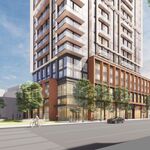TheTigerMaster
Superstar
It would be more along the lines of "Rapid Transit" and "Surface LRT", then "faster trains" and "slower trains"
I'm not saying this is the way it will be implemented, but rather the way that it should be implemented.
Saying "Rapid Transit" and "Surface LRT" isn't better than saying "train go fast" and "train go slow". It still makes the latter seem slower.
LRT is Rapid Transit. There is zero reason for it not to be listed as Rapid Transit.




